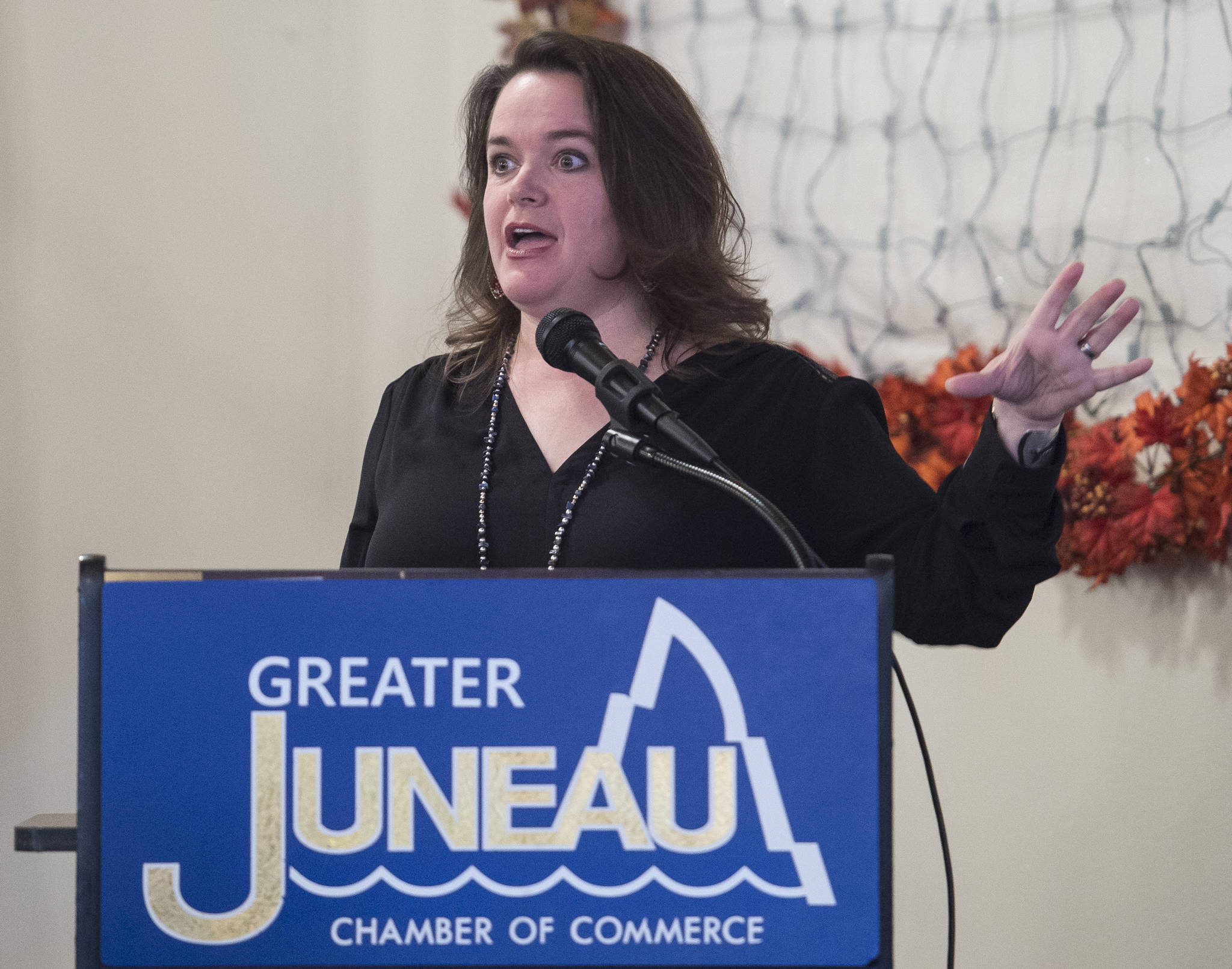As she began a presentation built around economic statistics in Southeast Alaska, Rain Coast Data Director Meilani Schijvens began with an apology.
“There’s a lot of red,” Schijvens said to those gathered at Thursday’s Juneau Chamber of Commerce luncheon. “Red is bad and I’m really sorry to be presenting these numbers to you. It depressed me as I was going through the analysis, but I think all of us in the room really understand the reason that we are where we are.”
The combinations of dropping oil prices and falling oil production has the statewide economy suffering, Schijvens said a moment later, and Southeast Alaska has not been immune. She presented 2016 numbers collected by Rain Coast Data, many of which were indeed colored red.
Jobs, earnings and population all declined in Southeast Alaska in 2016. Juneau’s population has decreased by nearly 400 people since 2014, according to Rain Coast Data. Juneau’s earnings increased by 0.2 percent, but Schijvens pointed out that the cost of living also rose, which outweighed the small increase.
Perhaps the most concerning trend, Schijvens pointed out, is the decline in state government jobs. From 2014 to 2017, according to the Rain Coast Data/Southeast Conference numbers, Southeast Alaska has lost 720 government jobs, a decrease of 14 percent. Three-quarters of those jobs came out of Juneau, according to the data.
“They’re really very important jobs to our families,” Schijvens said. “They’re higher paying jobs with full benefits, so these are really the cornerstone jobs of our household economies that are being lost.”
Juneau is very dependent on state jobs, Schijvens said, as 14 percent of all direct wages in Southeast Alaska come from the state. Rain Coast Data predicts that the amount of government jobs will continue to decline, as the company’s early job reports from 2017 are “grim.” State employment is predicted to fall 4 percent this year, according to Rain Coast Data.
Seafood, construction and timber industries have also experienced decreasing employment since 2014, Schijvens said. Declines in population and state jobs are projected to continue, Schijvens said, and Rain Coast Data’s projection reports that there’s a link there.
“As long as the state continues to reduce jobs, payments to communities and infrastructure investments in the region,” the report states, “job losses will continue, and these will continue to be paired with population declines.”
Some business owners still optimistic
Schijvens tried to also bring some good news to the luncheon, which was well attended. The tourism industry is booming in Southeast and in Juneau, with more than a million cruise ship passengers passing through Juneau this summer. There was also an increase in healthcare and mining jobs in 2016, she said.
This spring, Rain Coast Data polled 209 Southeast Alaska business owners from 22 communities, and 64 percent of them were positive about the economy, saying the business climate was either “good” or “very good.” Fifty of those business owners were from Juneau, with 57 percent of them optimistic and 40 percent concerned.
Schijvens said Rain Coast and Southeast Conference have identified seven key priorities moving forward to help improve the economy in Southeast. These priorities include: reforming the Alaska Marine Highway system; finding diesel fuel alternatives to reduce energy costs; securing an adequate timber supply; marketing Southeast Alaska better to visitors, particularly hoping to get more independent travelers; utilizing and processing more seafood; developing more seafood options including oysters and geoducks; and instituting further maritime job training and development.
• Contact reporter Alex McCarthy at 523-2271 or alex.mccarthy@juneauempire.com.

